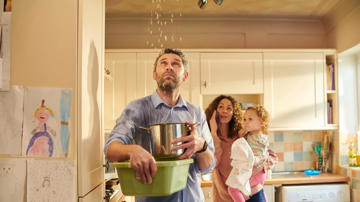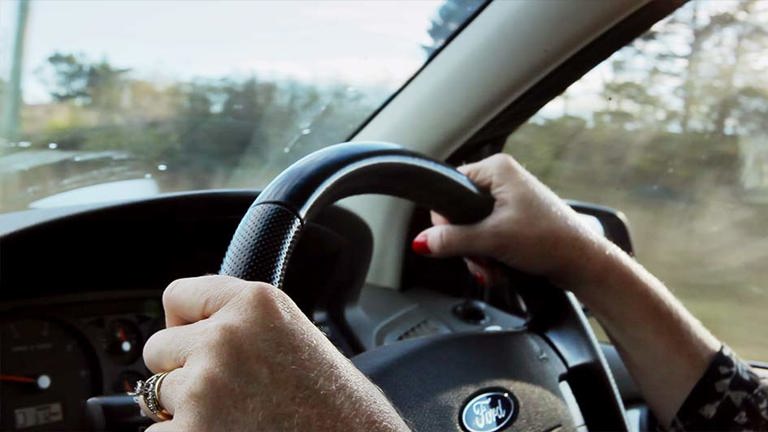Living in Australia means living with the reality that natural disasters and extreme weather events including storms, fires and floods can – and are increasingly likely to – happen.1 That knowledge can sometimes make us feel powerless, but understanding what events and damage are covered by insurance can help you choose the right building insurance cover for your home.
“In the six months between September 2021 and March 2022 alone, there was an earthquake and severe hailstorm in Victoria, major bushfires in Western Australia, and catastrophic flooding across two states, Queensland and New South Wales. If any one of those extreme events impacted your home and you weren’t adequately insured, it would be life-changing,” says Chris Hope, Youi’s Head of Product – Home.
“With natural disasters like these becoming more frequent, it’s never been more important to check your building insurance policy regularly to consider if you’ve got the right financial protection for where you live.”
What is building insurance?
Building insurance helps protect property owners for loss or damage to a home or commercial structure caused by an insurable event such as fire, storm, earthquake, vandalism, theft, and water damage. Also known as home insurance, building insurance may help cover the cost of repairing some external damage or replacing your insured property if destroyed by a natural disaster.
Permanent fixtures and fittings such as your home’s roof, ceilings, garage, driveway, fence, floors, windows, doors and fitted kitchen can also generally fall under building insurance coverage – along with secondary structures such as cabanas, sheds and pergolas. Not all insurers cover all fixtures, so it’s a good idea to check your insurer’s product disclosure statement.
Additionally, some building insurance policies may cover you for natural disaster-related inclusions such as temporary accommodation, emergency repairs, professional clean-up fees and funeral expenses. Limits often apply, so always check to see how much you’re covered for.
Building insurance on its own is unlikely to cover you for items or belongings damaged or destroyed inside your home in an extreme weather event. You’ll need to take out contents insurance for that, either standalone or rolled into a home and contents insurance policy.
As with any insurance offering, building insurance inclusions and exclusions pertaining to specific natural disasters differ across policies and providers, so check your insurer’s PDS to find out exactly what you’re covered for.
What are some natural disasters building insurance covers?
Building insurance generally provides protection against fires, floods, storms and earthquakes. Since the Black Summer bushfires in 2019-20, Australian insurers, including Youi, have recorded more than $13 billion in claims costs resulting from catastrophes of this nature.2
Some insurers, like Youi, include these natural disasters as standard within their building insurance policies. Others may offer cover for specific natural disasters as an optional add-on. In some cases, if your postcode or address is deemed a high-risk area for natural disasters, your building insurance options or premiums might be affected.
“In this instance, do your research to check if the area is prone to natural disasters or might have been reclassified – for example, in light of the last floods – and find out what your options are when it comes to building insurance,” says Hope. “Depending on the difficulty [of obtaining insurance], you might have to work with a broker or specialty-type carrier but most of the time, there will be someone out there who can offer the cover.”
What is considered storm damage?
When it comes to storm insurance, Youi’s cover includes loss or damage to the insured property caused by storm, lightning, wind, hail, snow and storm water overflow from roof gutters and downpipes or from your immediate surroundings.3 Storm coverage also extends to mechanical, electrical or electronic failure or breakdown as a direct result of the storm.
There are a number of storm cover exclusions, such as storm surge, rising damp and seepage, or loss or damage to retaining walls, so check your PDS to see what you’re not covered for.
What is considered fire damage?
For fire insurance, Youi’s cover may protect you against loss or damage to the insured property caused by bushfire or accidental fire. You’re also protected against damage due to soot or smoke from a bushfire or an accidental fire where the flames were within 100m of the building.4
Fire cover doesn’t protect you from loss or damage caused by glowing, heat, smouldering, scorching or melting where there were no actual flames.
The finer details of the protection offered against specific natural disasters such as fire tend to vary across insurance providers and policies, so always refer back to your policy documents for more information.
What is considered flood damage?
Flood insurance can be complicated but with Youi’s flood cover, you’re protected against loss or damage to the insured property caused by flood.4
Damage arising from storm surge, rising damp or seepage from water under the ground, and landslip, subsidence or erosion that takes place over a period of time, isn’t included in your flood cover. For the full list of your flood damage inclusions and exclusions, consult your PDS.
What is considered earthquake damage?
Youi’s building insurance cover may protect you for loss or damage occurring to the insured property as the result of an earthquake, volcanic eruption, hydrothermal activity or tsunami.3 This also extends to other insurable events, such as landslips, that occur as a direct result of an earthquake within 72 hours of the initial event.
You won’t be covered for damage or loss to the insured property if landslip, subsidence or erosion occurs over an extended period of time.
What is the average cost of flood restoration?
While it’s impossible to fully calculate the emotional toll of catastrophic floods like the ones that devastated 600km of Australia’s east coast in 2022, the financial cost is more quantifiable.2
As of November 2022, the February-March SEQ and NSW floods had tallied more than $5.65 billion in insured losses from more than 237,000 claims, making it the costliest natural disaster in Australia’s history.5 In the worst-affected regions, Brisbane and Lismore, claims averaged around $30,000 for Brisbane and almost $80,000 for Lismore respectively.2
Common home insurance mistakes to try to avoid
When shopping around for home and contents insurance, most of us share the same goal: finding a policy that balances value for money with security for some of our most valuable assets, should the worst happen. But finding that perfect-fit product is only half the job.
Among the most common mistakes you can make with your home insurance cover are underinsuring your home initially, and then neglecting to update the evaluated cost on your policy to rebuild or replace your property as the years roll by.
“Having an outdated policy that no longer reflects your rebuild value could lead to you being thousands of dollars out of pocket when you least need it,” says Hope.
“In today’s inflationary environment, building materials are one of the things that is particularly going up, so if you picked half a million dollars as the cost to rebuild your house five years ago, it’s most certainly not half a million dollars now.
“Another potential pitfall is not updating to the right cover when you’ve substantially changed how you live, whether that’s a major renovation or you’ve since acquired a lot of expensive new furniture.”
How to help protect your home against natural disasters
It’s impossible to completely eliminate the threat of a natural disaster to your home, but you can plan ahead to help minimise the potential impact of a fire, flood, storm or earthquake with some general maintenance solutions and mitigation strategies. These may help reduce your premiums or the risk to your home, especially if you live in a high-risk area. Here’s how.
Tips to help protect your home against fires
Do you live in an area that’s prone to bushfires? Keep your home and property clear from flammable objects and stay on top of the following general maintenance jobs:
- Regularly test and replace smoke alarms
- Keep property grounds and gutters clean
- Regularly mow the grass and remove cuttings
- Cut back trees and shrubs away from the house.
It’s also worth having a long, sturdy hose that can reach around your home, with access to a good source of water and a backup generator.
It’s essential to have a safety plan in place in case you need to evacuate in the event of a bushfire or house fire. For more information, refer to your state or territory fire agency website. Fire and Rescue NSW6 has a downloadable escape plan template; Queensland Fire and Emergency Services has an online checklist to help you plan your escape route.7
Tips to help protect your home against floods
Help reduce the risk of flooding at your home by:
- Regularly checking and cleaning your gutters and downpipes
- Trying to re-route water to direct it away from your home.
Elevated Queenslander-style homes can be ideal in high-risk flood areas, but it’s always important to store your belongings high above ground level to minimise flood damage. Check that any electrics – for example, power points – are also up high.
Tips to help protect your home against storms
If your home is often subject to severe storms during storm season, keeping up with general maintenance around your property can help to minimise damage or loss. Include the following:
- Use gap fillers and seals around doors and windows to help keep your house watertight
- Regularly clean gutters and downpipes
- Inspect roofing and replace missing or damaged tiles or roof sheets
- Remove or secure loose items such as outdoor furniture, pool toys and trampolines.
Tips to help protect your home against earthquakes
Here are a few ways to help minimise potential loss and significant damage to your home in the event of an earthquake:
- Secure shelves to walls
- Store heavy objects on lower shelves
- Avoid hanging heavy items such as mirrors and pictures near beds or sitting areas
- Repair deep cracks in ceilings and foundations
- Store flammable objects in secure cabinets on lower shelves.
One event, one excess
At Youi, we like to do things a little differently, and that includes putting you first. When you or your spouse or de facto take out more than one policy with Youi, including building insurance cover, you’ll get access to what we like to call ‘one event, one excess’: it means that, if the policyholder is the same legal entity or person, or their spouse or de facto partner and a claim is made for the same incident on more than one Youi policy – such as car and home, or boat and caravan –only one excess will need to be paid. The incident must be a single event that occurs at the same address and time, and the applicable excess will be the highest excess amount noted on the relevant policies.
Looking to find the best building insurance cover to suit your needs, and to help protect your home or commercial premises against natural disasters and extreme weather events? Check out Youi’s range of home and building insurance products to see if they are right for you.
1 Source: Australian Climate Service – Future climate change (2022)
2 Source: Insurance Council of Australia – Insurance Catastrophe Resilience Report 2021-22
3 Exclusions, limits and additional fees may apply. For more details, see the Home Insurance PDS.
4 Exclusions and limits may apply. Cover not available within the first 72 hours of taking out the policy. See PDS, TMD and your policy schedule for full details.
5 Source: The McKell Institute – Three-year weather bill reaches $12.3 billion (2022)
6 Source: NSW Fire and Rescue – Fire Escape Plan
7 Source: Queensland Fire and Emergency Services – Fire Escape





